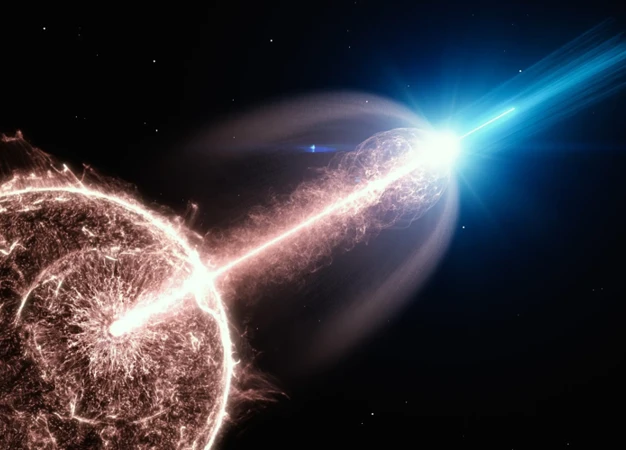Humans have always been fascinated by the wonders of the universe. The cosmos is filled with countless mesmerizing celestial phenomena, captivating our imagination and pushing the boundaries of our understanding. Among these awe-inspiring wonders are gamma-ray bursts, which can be described as cosmic fireworks erupting with unimaginable energy. These mysterious bursts of high-energy radiation have puzzled scientists for decades, and their origins continue to baffle even the most brilliant minds. In this article, we will delve into the captivating world of gamma-ray bursts, exploring their different types, the mind-boggling energy they unleash, potential theories regarding their origins, methods for observing and interpreting their data, and the implications of these fascinating phenomena. Join us on this cosmic journey as we attempt to unravel the enigma of gamma-ray bursts and pave the way for future discoveries in the realm of astrophysics.
Contents
- Overview of Gamma-Ray Bursts
- Origins of Gamma-Ray Bursts
- Observing Gamma-Ray Bursts
- Interpreting the Data
- The Implications and Future Studies
- Conclusion
- Frequently Asked Questions
- References
-
Frequently Asked Questions
- 1. How long do Gamma-Ray Bursts typically last?
- 2. Are Gamma-Ray Bursts dangerous to Earth?
- 3. Can we predict when a Gamma-Ray Burst will occur?
- 4. How far away are most Gamma-Ray Bursts?
- 5. What causes Gamma-Ray Bursts?
- 6. What can we learn from studying Gamma-Ray Bursts?
- 7. How do satellites detect Gamma-Ray Bursts?
- 8. Can we observe Gamma-Ray Bursts with ground-based telescopes?
- 9. How do scientists analyze the data collected from Gamma-Ray Bursts?
- 10. What advancements in telescope technology are aiding the study of Gamma-Ray Bursts?
- References
- Read More
The Spectacular Cosmic Phenomenon
Gamma-ray bursts (GRBs) stand out as one of the most perplexing and spectacular cosmic phenomena that the universe has to offer. These bursts unleash an astonishing amount of energy in the form of gamma-ray radiation, making them the most powerful explosions in the cosmos. Lasting anywhere from a few milliseconds to several minutes, gamma-ray bursts can release more energy in their brief lifespan than our Sun will emit over its entire 10-billion-year lifespan. The sheer magnitude of this energy is mind-boggling, and it raises numerous questions about the origins and mechanisms behind these cosmic fireworks. Scientists have observed two types of GRBs: long-duration bursts, which can last for tens of seconds to minutes, and short-duration bursts, which typically last less than two seconds. The intense brightness of these events allows them to be detected across vast distances, enabling astronomers to study them in greater detail. The study of gamma-ray bursts serves as a window into the most extreme and cataclysmic events in the universe, shedding light on the processes that shape galaxies and drive the evolution of the cosmos.
Understanding Gamma-Ray Bursts
Understanding gamma-ray bursts (GRBs) is a challenge that has puzzled scientists for decades. These cosmic events are incredibly complex and still hold many mysteries waiting to be unraveled. One key aspect of understanding GRBs lies in comprehending their immense energy output. GRBs release energy in the form of high-energy gamma rays, which are a type of electromagnetic radiation with a shorter wavelength and higher frequency than X-rays. To put it into perspective, the energy released during a GRB surpasses the energy output of our entire Milky Way galaxy for billions of years. Researchers have identified two main types of GRBs: long-duration bursts, which are associated with the collapse of massive stars called supernovae, and short-duration bursts, which are thought to originate from the merger of two neutron stars or a neutron star with a black hole. Deciphering the mechanisms behind these bursts involves studying the behavior of matter under extreme conditions and the physics of high-energy processes, such as the formation of black holes and the generation of relativistic jets. Through careful observation and analysis, scientists hope to gain deeper insights into the origins and nature of gamma-ray bursts, providing valuable clues about the fundamental nature of the universe.
Overview of Gamma-Ray Bursts
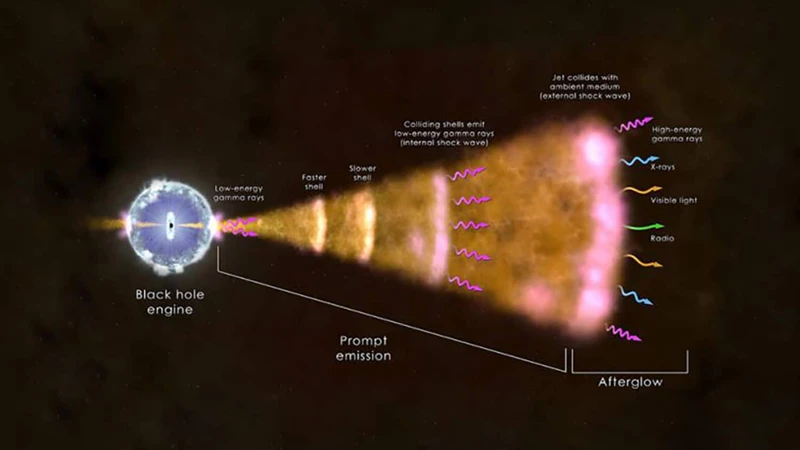
Gamma-ray bursts (GRBs) are divided into two main types: long-duration bursts and short-duration bursts. Long-duration bursts can last for tens of seconds to minutes, while short-duration bursts typically last less than two seconds. Long-duration bursts are thought to be associated with the collapse of massive stars, known as supernovae, while the origins of short-duration bursts are still being actively researched. These bursts emit an immense amount of gamma-ray radiation, which can be thousands of times brighter than a typical supernova event.
Long-duration bursts are often found in distant galaxies, indicative of their association with massive stellar explosions. On the other hand, short-duration bursts tend to originate from closer, older galaxies. This distinction in locations suggests that the progenitors of these bursts may differ.
The energy released during a gamma-ray burst is staggering. In just a matter of seconds or minutes, a burst can emit more energy than our Sun will emit over its entire lifespan. The gamma rays emitted during these events can travel billions of light-years across the universe, allowing us to detect and study them from Earth. The study of GRBs has led to significant advancements in our understanding of black holes, supernovae, and the early universe.
Understanding the different types of gamma-ray bursts and the incredible amount of energy they release is crucial for unraveling the mysteries of the cosmos. By studying these cosmic fireworks, scientists pave the way for further exploration and discovery of the most extreme phenomena in the universe.
Types of Gamma-Ray Bursts
When it comes to gamma-ray bursts (GRBs), scientists have identified two distinct types: long-duration bursts and short-duration bursts. Long-duration bursts are the more common type and typically last from tens of seconds to minutes. These bursts are often associated with the explosive death of massive stars, known as supernovae. The core of a massive star collapses, resulting in the formation of a black hole or a neutron star. As matter falls into the newly formed compact object, it releases a tremendous amount of energy in the form of gamma-ray radiation. This process produces a long-duration burst. On the other hand, short-duration bursts typically last less than two seconds and are believed to originate from the merging of two compact objects, such as two neutron stars or a neutron star and a black hole. The collision and subsequent merger of these objects generate a powerful burst of gamma-ray radiation. Scientists rely on the distinct duration of the bursts, along with other characteristics such as their spectral properties, to differentiate between the two types. By understanding the different types of gamma-ray bursts, scientists can gain valuable insights into the catastrophic events that give birth to these cosmic phenomena and the diverse mechanisms at play in the universe.
Unleashing Unimaginable Energy
Unleashing unimaginable energy, gamma-ray bursts (GRBs) are cosmic explosions that can release more energy in a few seconds than the entire lifetime output of countless stars. The power behind these explosions is truly astonishing, with some bursts emitting as much energy in a brief moment as our Sun would emit over billions of years. The energy released during a GRB is so immense that it can be equivalent to the mass-energy of several suns. To put it into perspective, a single burst can briefly outshine an entire galaxy. The exact mechanisms that drive this release of energy are still not fully understood, but two leading theories have emerged: the collapsar model and the merging neutron star model. In the collapsar model, a massive star undergoes a gravitational collapse, forming a black hole that ejects material in powerful jets. On the other hand, the merging neutron star model involves the collision of two neutron stars, resulting in a burst of energy. Regardless of the specific mechanisms, one thing is certain: gamma-ray bursts are true cosmic fireworks, displaying the immense power and violence that the universe is capable of. These bursts serve as a reminder of the awe-inspiring forces at play in the cosmos and the mysteries that still await our exploration.
Origins of Gamma-Ray Bursts
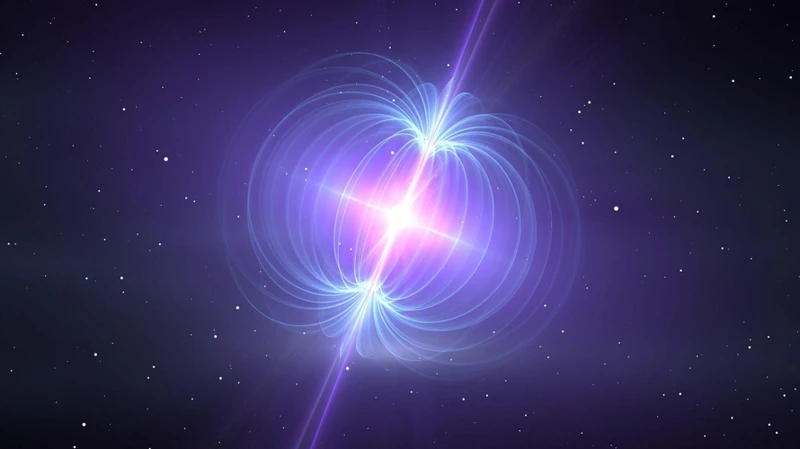
The origins of gamma-ray bursts (GRBs) continue to pose a fascinating and enigmatic puzzle for astrophysicists. These cosmic fireworks can be traced back to cataclysmic events occurring in the vast reaches of space. One widely accepted theory suggests that long-duration GRBs are linked to the explosive deaths of massive stars, known as supernovae. As these massive stars run out of fuel, they undergo a gravitational collapse, resulting in a supernova explosion that ejects matter into space. Simultaneously, a compact object, such as a neutron star or a black hole, is formed. It is believed that the intense beams of gamma-ray radiation are produced when a massive amount of energy is released during the formation of an accretion disk around the newly formed compact object. This accretion disk propels high-speed jets of plasma outward from opposite poles, directing the gamma-ray emission along a narrow beam. On the other hand, short-duration GRBs are hypothesized to occur when two neutron stars or a neutron star and a black hole merge, resulting in a violent collision. These collisions generate gravitational waves and release a burst of gamma-ray radiation. The exact mechanisms behind GRBs, especially the short-duration bursts, are still under investigation, and future discoveries using advanced telescopes and instruments will play a crucial role in unraveling the mysteries of these cosmic phenomena.
Natural Cosmic Cataclysms
Natural cosmic cataclysms play a pivotal role in the formation of gamma-ray bursts (GRBs). These cataclysms are enormous events that occur on a cosmic scale, involving the most extreme physical processes imaginable. One potential source of GRBs is the collision of two neutron stars or a neutron star with a black hole. This cataclysmic event releases an immense amount of gravitational potential energy, resulting in the ejection of high-energy jets of particles and radiation. Another possible scenario is the collapse of massive, rapidly rotating stars, known as collapsars. When these stars burn through their nuclear fuel, their core collapses under the influence of gravity, triggering a supernova explosion. In the process, a powerful jet of material and radiation is launched, giving rise to a gamma-ray burst. These natural cosmic cataclysms demonstrate the immense power and violence of the universe, shaping the galaxies and celestial objects we observe today. By studying and understanding these cataclysmic events, scientists can gain deeper insights into the nature of the cosmos and unlock the mysteries of the universe.
Potential Progenitor Theories
The origins of gamma-ray bursts (GRBs) have long remained a tantalizing mystery for astronomers. Several potential progenitor theories have been proposed to explain the cataclysmic events that give rise to these cosmic fireworks. One theory suggests that long-duration GRBs may originate from the colossal explosions of massive stars, known as supernovae. In this scenario, a rapidly rotating massive star undergoes a core collapse, resulting in a supernova explosion and the formation of a black hole or a rapidly spinning neutron star, also known as a magnetar. The energy released during the collapse and subsequent accretion onto the black hole or the magnetic activity of the magnetar gives rise to the high-energy gamma-ray emission observed during a burst.
Another theory proposes that short-duration GRBs may be caused by the merger of two compact objects, such as neutron stars or black holes. When these objects spiral toward each other and ultimately collide, a tremendous amount of energy is released in the form of gravitational waves and gamma-ray radiation. This scenario is supported by observations of both gravitational waves and gamma-ray emission occurring simultaneously during certain events.
Additionally, there is a possibility that some GRBs may be produced by highly magnetized and rapidly spinning neutron stars called magnetars. These magnetars have incredibly strong magnetic fields, capable of releasing bursts of energy in the form of gamma-rays. The exact mechanisms by which magnetars generate GRBs are still under investigation.
While these theories provide plausible explanations, the precise progenitors of gamma-ray bursts are far from being fully understood. Further research, including the detection of associated electromagnetic counterparts and the study of host galaxies, is necessary to validate and refine these theories. The ongoing exploration of the cosmos and advancements in telescopes and instruments provide hope for unraveling the intricate web of factors that contribute to these breathtaking cosmic phenomena.
Observing Gamma-Ray Bursts
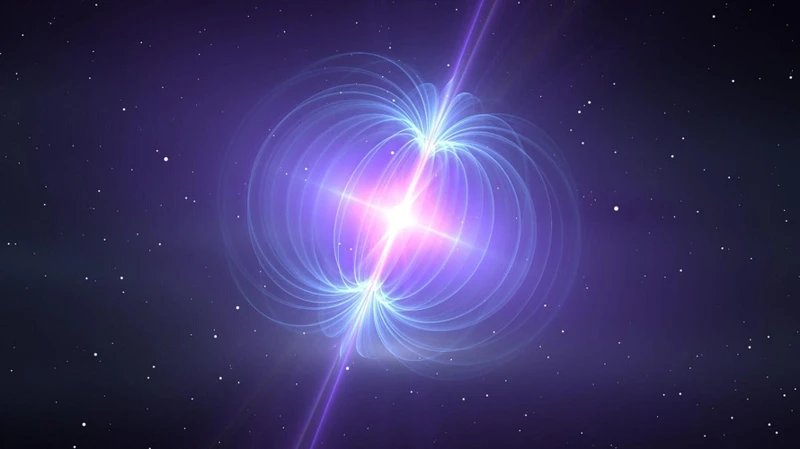
Observing gamma-ray bursts (GRBs) is a complex and challenging task for astronomers. Due to their short duration and unpredictable occurrence, capturing these cosmic events requires a dedicated network of satellites and ground-based telescopes. Satellites equipped with gamma-ray detectors, such as NASA’s Swift and Fermi, play a crucial role in detecting the bursts and quickly relaying their coordinates to ground observatories. Upon receiving the alert, telescopes worldwide swing into action to observe the burst across various wavelengths, from optical to X-rays. This coordinated effort allows scientists to gather valuable data about the burst’s duration, spectrum, and afterglow, which provides insights into its physical properties and the processes taking place during the explosion. The data collected during the observations help astronomers determine the distance of the burst, its energy release, and its potential progenitor, providing clues about the cataclysmic events responsible for these astonishing cosmic fireworks. By combining observations from different telescopes and satellites, scientists can obtain a more comprehensive understanding of gamma-ray bursts and unravel the mysteries surrounding their origins and mechanisms.
The Role of Satellites
Satellites play a crucial role in observing and studying gamma-ray bursts (GRBs) from space, allowing scientists to gather valuable data about these enigmatic cosmic phenomena. Dedicated satellites, such as NASA’s Fermi Gamma-ray Space Telescope and the European Space Agency’s INTEGRAL (International Gamma-Ray Astrophysics Laboratory), have been specifically designed to detect and analyze GRBs. These satellites are equipped with detectors capable of capturing the high-energy gamma rays emitted during the burst, providing astronomers with detailed information about the burst’s intensity, duration, and spectral properties. The advantage of using satellites for GRB observations is their ability to orbit above Earth’s atmosphere, which would otherwise block or distort gamma-ray signals. This unobstructed view allows for more accurate measurements and a clearer understanding of the physical processes involved in these explosive events. Satellites also provide the capability to detect and study GRBs in multiple wavelengths, ranging from gamma rays to X-rays, ultraviolet, optical, and radio waves, enabling a comprehensive analysis of the burst’s characteristics. With advancements in satellite technology, scientists can now detect and monitor GRBs in real-time, allowing for prompt follow-up observations by ground-based telescopes and facilitating collaborative efforts across the astronomical community in unraveling the mysteries of these cosmic fireworks.
Collecting Valuable Data
Collecting valuable data is crucial in the study of gamma-ray bursts (GRBs), as it provides insights into the nature of these cosmic phenomena and helps scientists unlock their mysteries. One of the primary tools used in gathering data on GRBs is satellites. These orbiting observatories are specifically designed to detect and measure gamma-ray radiation, allowing astronomers to monitor and analyze the bursts in real time. Satellites like NASA’s Fermi Gamma-ray Space Telescope and the European Space Agency’s INTEGRAL have been instrumental in detecting and observing GRBs, providing detailed information about their duration, intensity, and spectral characteristics. By analyzing the data collected from these satellites, astronomers can determine the distance to the GRB, its energy output, and various other properties. In addition to satellites, ground-based observatories also play a significant role in data collection, particularly in observing the afterglow of GRBs across different wavelengths of light, including optical, infrared, and radio waves. This multi-wavelength approach enables scientists to gather a comprehensive understanding of the bursts and their associated phenomena. The collaboration between space-based and ground-based instruments has proven to be invaluable in unraveling the complex nature of GRBs, bringing humanity closer to comprehending these astonishing cosmic fireworks.
Interpreting the Data
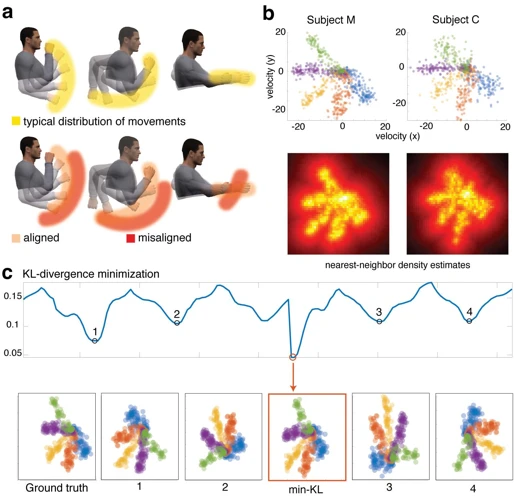
Interpreting the data gathered from gamma-ray bursts (GRBs) is a complex and intricate process that requires careful analysis and study. One of the key tools used in interpreting GRB data is the analysis of light curves. Light curves provide a graphical representation of the brightness variations of the burst over time. By examining the shape, duration, and intensity of the light curve, scientists can gain insights into the underlying mechanisms behind the burst. They can also determine important parameters such as the duration of the burst, the peak luminosity, and the spectral hardness. Another crucial aspect of data interpretation is the study of spectral features. Spectral analysis involves examining the different wavelengths of radiation emitted during a burst and studying the absorption and emission lines within the spectrum. These spectral features can provide valuable information about the composition and properties of the matter involved in the burst. Additionally, by studying the afterglow of a GRB, scientists can gather further insights into the nature of the burst and its immediate surroundings. The data obtained from these various methods of interpretation help scientists piece together the puzzle of GRBs and contribute to our understanding of the extreme phenomena occurring in the cosmos.
Analyzing Light Curves
Analyzing light curves is a crucial aspect of understanding gamma-ray bursts and extracting valuable information from the observed data. A light curve is a graph that represents the brightness of an astronomical object over time. In the case of gamma-ray bursts, the light curve shows how the burst’s brightness changes over the course of its duration. By carefully examining the shape, duration, and patterns within the light curve, scientists can gain insights into the physical processes occurring during the burst. The analysis of light curves helps determine the burst’s duration, peak intensity, and spectral evolution, which can provide clues about its origin and the mechanisms involved. Light curves can exhibit a variety of shapes and features, including single peaked, multi-peaked, or plateau-like profiles. By comparing these patterns to theoretical models and known phenomena, astronomers can make inferences about the physics driving the bursts. Additionally, analyzing the temporal characteristics of the light curve can provide information about the internal structure of the explosion and the relativistic motion of the emitting material. This analysis plays a vital role in unraveling the mysteries of gamma-ray bursts and advancing our understanding of these spectacular cosmic phenomena.
Studying Spectral Features
When studying gamma-ray bursts (GRBs), one of the crucial aspects is analyzing the spectral features of the emitted radiation. Spectral analysis provides valuable insights into the composition and characteristics of these cosmic phenomena. Astronomers use spectrographs to disperse the incoming radiation into its constituent wavelengths, creating a spectrum that reveals important information. The spectrum of a GRB can exhibit a variety of features, such as emission lines, absorption lines, and continuum radiation. These features can offer clues about the elements present in the source of the burst, as well as the physical conditions and processes occurring within it. By carefully examining the spectral lines, scientists can identify signatures of different elements, such as hydrogen, helium, and heavier elements like iron. This information helps in understanding the environments and processes that give rise to gamma-ray bursts. Additionally, variations in the spectral features can provide insights into the motion and expansion of the emitting material. Spectral analysis plays a key role in unraveling the mysteries surrounding GRBs and contributes to our broader understanding of the universe’s most energetic events.
The Implications and Future Studies

The study of gamma-ray bursts (GRBs) not only expands our knowledge of the universe but also carries significant implications for our understanding of various astrophysical phenomena. These cosmic fireworks provide valuable insights into the formation and evolution of galaxies. By examining the properties and patterns of GRBs, scientists can uncover information about the star formation rates in distant galaxies and gain a deeper comprehension of the processes that shape these cosmic structures. Additionally, the analysis of GRBs can aid in studying the distribution of heavy elements in the universe, as these bursts often result from the deaths of massive stars. GRBs hold potential implications for the enigmatic phenomenon known as Henyei, which is thought to occur when high-energy astrophysical particles reach Earth. By investigating the intricate relationship between GRBs and Henyei, researchers can gain crucial information about the interplay of energy and matter in the universe. Moving forward, advancements in telescopes and instruments will revolutionize the study of GRBs, enabling scientists to capture more precise data and delve even deeper into the origins, mechanisms, and cosmic implications of these fascinating phenomena. Through future studies, astronomers hope to unlock the mysteries surrounding gamma-ray bursts and uncover further connections between these cosmic events and other intriguing aspects of the universe. With each new discovery, the realm of astrophysics expands, unveiling a universe filled with even more wonders and untapped knowledge.
Understanding the Impact on Henyei Phenomena
As scientists continue to unravel the mysteries of gamma-ray bursts (GRBs), they are beginning to understand the impact these cosmic phenomena can have on a variety of astrophysical processes, including the intriguing Henyei phenomena. Henyei phenomena refer to the transient events that occur within the vicinity of GRBs, such as the ejection of relativistic jets and the creation of black holes. These phenomena have significant implications for the evolution of galaxies and the formation of new stars. The intense energy released during a GRB can trigger the collapse of nearby molecular clouds, leading to the birth of massive stars. Additionally, the high-energy particles and radiation produced by GRBs can ionize the surrounding interstellar medium, influencing the formation and dynamics of galaxies. By studying the impact of GRBs on Henyei phenomena, scientists can gain valuable insights into the cosmic processes that shape our universe. Understanding these phenomena is crucial for comprehending the intricate interplay between gamma-ray bursts and the broader astrophysical landscape. To learn more about other celestial events and their impact, you can explore the science behind meteorite impacts or delve into the fascinating results of galaxy and exoplanet surveys.
Advancements in Telescopes and Instruments
Advancements in telescopes and instruments have played a crucial role in the study of gamma-ray bursts (GRBs), allowing scientists to gather valuable data and gain a deeper understanding of these cosmic phenomena. Over the years, astronomers have developed sensitive detectors and sophisticated observatories specifically designed to detect and study GRBs. The launch of dedicated satellites, such as the Fermi Gamma-ray Space Telescope and the Swift satellite, has revolutionized our ability to observe and analyze these events. These advanced instruments have provided scientists with an unprecedented amount of data, including information on the duration, spectral properties, and light curves of GRBs. By analyzing the light curves, which show how the brightness of the burst changes over time, astronomers can glean insights into the physical processes involved in these cosmic explosions. Spectral analysis, on the other hand, allows scientists to study the distribution of energy within the burst and identify unique spectral features that provide clues about their origins. These advancements in telescopes and instruments have not only enhanced our understanding of GRBs but also opened up new avenues for research in astrophysics, allowing scientists to explore other fascinating topics, such as mapping galaxy and exoplanet surveys results. As technology continues to evolve, future telescopes and instruments promise even greater sensitivity and capabilities, enabling astronomers to delve deeper into the mysteries of the universe and uncover more secrets about gamma-ray bursts.
Conclusion

In conclusion, the study of gamma-ray bursts has provided us with invaluable insights into the immense power and cataclysmic events that occur throughout the universe. These spectacular cosmic phenomena continue to intrigue and challenge scientists as they strive to uncover the origins and mechanisms behind them. We have explored the different types of gamma-ray bursts, from long-duration bursts to short-duration bursts, each offering unique opportunities for scientific investigation. The data collected from these events, through the efforts of satellites and advanced telescopes, have allowed us to analyze light curves and study spectral features, providing valuable clues about their nature. While our understanding of gamma-ray bursts is still incomplete, the advancements in telescopes and instruments offer promising avenues for future studies. By unraveling the mysteries of these cosmic fireworks, we can gain a deeper comprehension of the universe’s evolution and potentially make significant breakthroughs in our understanding of the phenomena that shape our existence. As we continue to push the boundaries of exploration, the journey to comprehend gamma-ray bursts and their implications on Henyei phenomena remains an exhilarating quest.
Frequently Asked Questions

FAQs about Gamma-Ray Bursts
1. What exactly is a gamma-ray burst?
A gamma-ray burst (GRB) is an extremely energetic explosion that releases intense bursts of gamma-ray radiation, making it one of the most powerful events in the universe.
2. What causes gamma-ray bursts?
The exact cause of gamma-ray bursts is still unknown. However, they are believed to be associated with cataclysmic events such as the collapse of massive stars or the merging of neutron stars.
3. How long do gamma-ray bursts last?
Gamma-ray bursts can have a duration ranging from a few milliseconds to several minutes, depending on the type. Long-duration bursts typically last for tens of seconds to minutes, while short-duration bursts last less than two seconds.
4. Are gamma-ray bursts harmful to Earth or life on it?
The chances of a gamma-ray burst directly affecting Earth from a nearby source are extremely low. However, if a gamma-ray burst were to occur within our galaxy, it could potentially have harmful effects on the ozone layer and biosphere.
5. Can we observe gamma-ray bursts with the naked eye?
No, gamma-ray bursts are not visible to the naked eye. They are detected using specialized instruments and satellites designed to detect and analyze high-energy gamma-ray radiation.
6. How do scientists study gamma-ray bursts?
Scientists study gamma-ray bursts by analyzing the data collected from satellites equipped with gamma-ray detectors. These detectors provide valuable information about the burst’s duration, intensity, and spectral features.
7. What information can we learn from studying gamma-ray bursts?
Studying gamma-ray bursts provides insights into the most extreme and cataclysmic events in the universe. They offer valuable information about the formation of galaxies, the evolution of stars, and the production of heavy elements.
8. Are there different types of gamma-ray bursts?
Yes, there are two main types of gamma-ray bursts: long-duration bursts and short-duration bursts. They differ in duration, with long-duration bursts lasting for tens of seconds to minutes, while short-duration bursts typically last less than two seconds.
9. Can gamma-ray bursts be detected from other galaxies?
Yes, gamma-ray bursts can be detected from other galaxies. In fact, the detection of gamma-ray bursts outside of our own galaxy has provided valuable information about the vastness of the universe and the distribution of these cosmic events.
10. Are there any potential dangers associated with gamma-ray bursts?
While the chances of gamma-ray bursts directly affecting us are minimal, they remind us of the immense power and cataclysmic events that occur in the universe. Studying them helps us understand the potential dangers that cosmic phenomena can pose and prompts further exploration and research.
References
Frequently Asked Questions

1. How long do Gamma-Ray Bursts typically last?
Gamma-Ray Bursts can vary in duration, with some lasting just a few milliseconds, while others can persist for several minutes.
2. Are Gamma-Ray Bursts dangerous to Earth?
Although Gamma-Ray Bursts release an enormous amount of energy, the likelihood of one directly impacting Earth and causing harm is exceedingly low due to their astronomical distances.
3. Can we predict when a Gamma-Ray Burst will occur?
Currently, we do not have the technology or knowledge to predict the exact timing of a Gamma-Ray Burst. However, advanced telescopes and satellite monitoring systems allow us to detect and study them after they have occurred.
4. How far away are most Gamma-Ray Bursts?
Most Gamma-Ray Bursts originate from galaxies billions of light-years away from Earth. Their extreme distance is one of the reasons it took scientists many years to discover and understand these phenomena.
5. What causes Gamma-Ray Bursts?
Gamma-Ray Bursts are believed to be caused by massive explosions, such as the collapse of massive stars or the merging of binary neutron stars. These events release an incredible amount of energy in the form of gamma-ray radiation.
6. What can we learn from studying Gamma-Ray Bursts?
Studying Gamma-Ray Bursts provides valuable insights into the processes occurring during the most violent events in the universe. It helps us understand the formation and evolution of galaxies, the properties of matter under extreme conditions, and the potential impact of cataclysmic events on the surrounding cosmic environment.
7. How do satellites detect Gamma-Ray Bursts?
Various satellites equipped with gamma-ray detectors, such as NASA’s Fermi Gamma-ray Space Telescope, detect Gamma-Ray Bursts by observing the high-energy gamma rays they emit. The satellites then transmit this data back to Earth for further analysis.
8. Can we observe Gamma-Ray Bursts with ground-based telescopes?
While ground-based telescopes cannot directly observe gamma rays, they can detect the afterglow of a Gamma-Ray Burst in other wavelengths, such as X-rays, visible light, and radio waves. Combining observations from different telescopes helps create a more complete picture of these cosmic events.
9. How do scientists analyze the data collected from Gamma-Ray Bursts?
Scientists analyze the data from Gamma-Ray Bursts by studying their light curves, which provide information about the burst’s intensity over time. They also analyze the spectral features to determine the composition of the materials involved and the physical conditions during the burst.
10. What advancements in telescope technology are aiding the study of Gamma-Ray Bursts?
New-generation telescopes, such as the upcoming James Webb Space Telescope, will provide unprecedented capabilities to observe and analyze Gamma-Ray Bursts. These advanced instruments will offer enhanced resolution, sensitivity, and spectral coverage, allowing scientists to delve deeper into the study of these cosmic fireworks.

